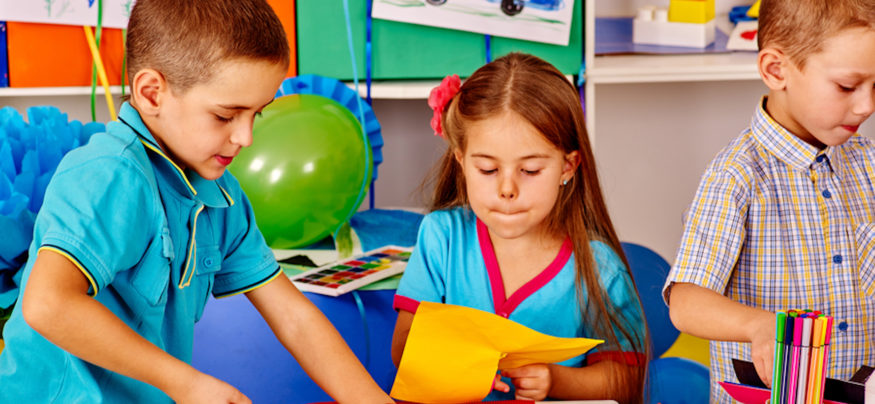Picture a scientist. Is that person you imagined working alone in a research lab?
Although that can be the reality for many scientists, engineers and others working in STEM careers, a new study of preschoolers shows that group collaboration can actually lead to more effective work on STEM-related projects.
The Research
Preschool children were given two STEM tasks to complete — a math problem and a spatial problem.
The difference was that for one task, students worked alone. For the other, they were told they were part of a virtual team working to solve the same problem. Students in the experimental group never met their supposed teammates and were alone in the room while they completed the assignments.
The Results
Irrespective of the gender of the student, they performed better, worked at the task longer, and reported more enjoyment when they were part of a team. The researchers compared their data in a meta-analysis with other studies to validate that a team environment can lead to positive attitudes toward STEM tasks. They also compared each student’s experience of the individual task and the team task.
Why It Matters
With the current push to get students interested in and prepared for STEM careers, it’s important to figure out what works to increase student engagement in addition to introducing more interactive devices. This research can guide teachers — and employers — in making STEM more fun and interesting at all levels.
The researchers suggest that teachers use collaborative language as well as tasks to make students feel like they are part of a team. In the classroom, that means using “we” to signify that the whole class is learning together and working to improve their skills in math, science and related subjects. This also helps prevent students from feeling left out or behind if they aren’t as strong in STEM subjects — everyone is working together to learn at their own pace.
It can also mean using group work at all levels. One element the researchers avoided was a sense of competition. Students were told that all teams were working on different tasks, so there was no pressure to finish first or perform better than other teams. Teachers can use that same model in their classrooms by assigning small groups of students related tasks and then asking each group to report their findings back to the class — that brings in the teaching element that we’ve used for a long time to help students master concepts. In the working world, employers can assign more team-based projects and researchers can write grants that fund teams rather than individual researchers.
When designed and managed well, group collaboration can be a positive motivator at all levels — and lead to more satisfaction with and better performance in STEM careers.
Learn more about other new initiatives to promote STEM education and visit our education technology solutions page.







